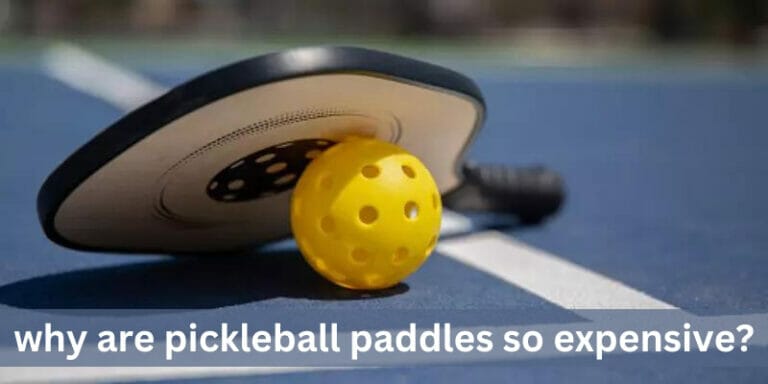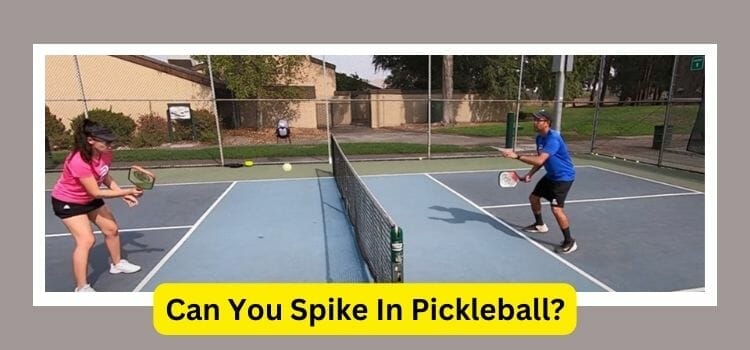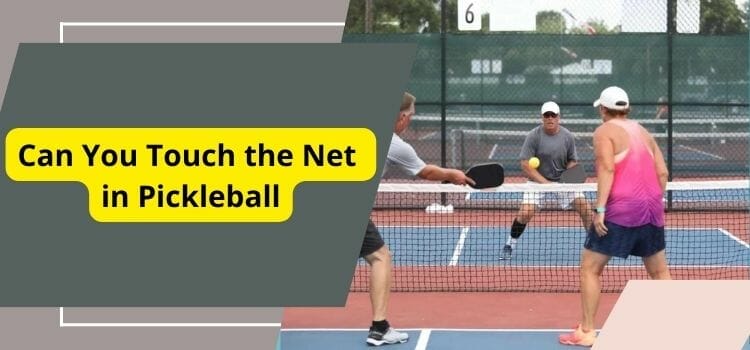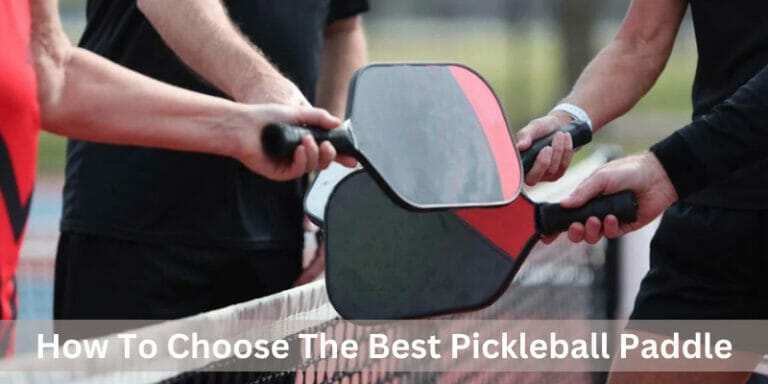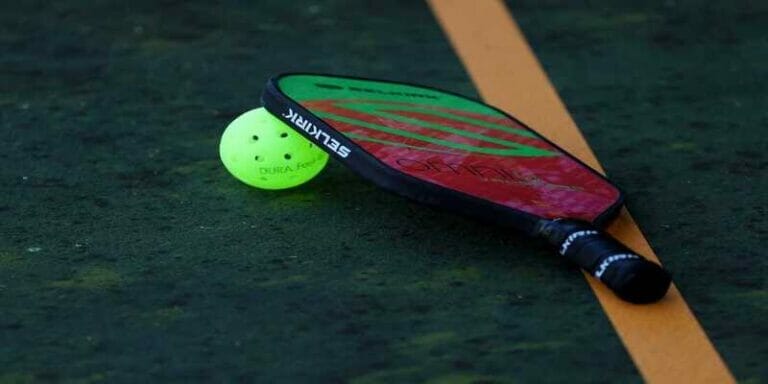What Is Stacking In Pickleball-5 Key Insights
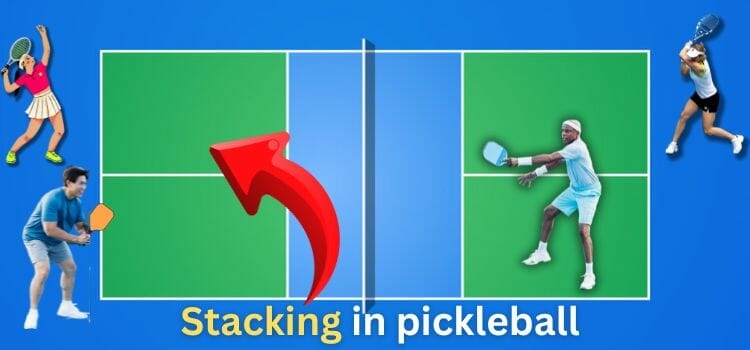
Ever wondered about the enchantment of stacking in Pickleball? What is stacking in Pickleball, and how does it wield its transformative power over the game?
So the answer is Stacking in Pickleball is a strategic maneuver where players position themselves on one side of the court to optimize their skills and capitalize on opponents’ weaknesses. This tactical approach enhances teamwork, creates a dynamic advantage, and often leads to scoring success. It’s a game-changer that savvy players use to dominate the court.
Here I’ll unravel the mysteries of stacking, reveal the rules, showcase its undeniable advantages, When to use stacking, and provide you with the competitive edge you’ve been searching for.
What Is Stacking In Pickleball-Everything You Need to Know
Stacking in pickleball is a doubles strategy where both players on a team line up, or stack, on the same side of the court before a serve or return. This is in contrast to the traditional doubles positioning, where each player stands on their own side of the court.
Stacking has quickly become popular among competitive players. To keep one player on a particular side of the court. This is often done to exploit a weakness in the opposing team.
Stacking can allow both players to move more freely around the court. This is because there is no need to worry about switching sides after every point.
Pickleball Stacking Rules
Stacking is legal in pickleball, as there are no rules about where the players can stand on the court.
However, stacking can also be confusing and risky, as it requires good communication and coordination between the partners.
It can also be easy to lose track of who is the correct server or receiver, which can result in faults or missed opportunities.
Therefore, stacking should be practiced and mastered before using it in a game.
Is stacking good in Pickleball

So, only use stacking if you’ve practiced it a lot. Don’t be afraid to try new things, but also understand that it may take some time to perfect them. With the right motivation and practice, you can perfect stacking!
Advantages of stacking in pickleball
To take advantage of player strengths, confuse opponents, and gain better court coverage while playing pickleball, it may be beneficial to implement the strategy of stacking.
By understanding the advantages of stacking and using its sub-sections as solutions, you can elevate your game and outmaneuver your opponents.
Let’s explore the benefits of stacking and how they can be implemented to improve your pickleball skills.
Taking advantage of player strengths
Pickleball players can utilize their unique skills to gain an advantage over their opponents. Teams can strategically stack their lineup to capitalize on individual abilities. Win rates and performance can be improved with this method.
It’s important to understand each team member’s strengths and role. For example, a strong server can be in the first position and a great volleyer in the second. This creates a formidable defense and offense tailored to the team’s strengths.
Stacking also protects weaker players. Stronger players at the beginning of the lineup can establish momentum and gain a psychological edge.
This strategy has been used in many sports, including basketball and baseball. Experienced pickleball players have found success with it, too.
Stacking is the way to go if you want to optimize performance and increase your chances of winning. Bamboozle your opponents and get that win!
Confusing opponents
Stack up in pickleball to surprise your opponents! Stacking means switching up positions, leaving enemies guessing, and giving you the upper hand.
It also lets you play to your strengths; move around for the forehand or backhand you’re best at. Plus, it encourages team talk – perfect for keeping the game going.
Pro tip: Before you stack, practice and make sure everyone knows the signals. That way, you can transition easily and dominate the court.
Better court coverage
Stacking is a strategic way to play pickleball. It helps you cover more ground and communicate better with your partner. This technique increases shot-making opportunities and helps you maneuver out of tricky situations.
It was first used in doubles tennis and later adopted by pickle ballers. Players have been using it in tournaments for years – and you can too! With practice, you can experience its benefits.
Pickleball requires quick thinking. Stacking helps you move quickly across the court, getting an advantage over your opponents. So why not stack them into submission? Ah, yes – sportsmanship!
Disadvantages of stacking in pickleball
To avoid the downsides of stacking in pickleball, including vulnerability to certain shots, lack of variety in play style, and difficulty adjusting mid-match, it’s important to understand these potential pitfalls and adapt your playing strategy accordingly.
Vulnerability to certain shots
Stacking up on one side of the court leaves players prone to shots that exploit their lack of coverage. Opponents can take advantage of this defensive gap. Close positioning compromises the ability to defend cross-court or deep-angle shots. Passing shots can cause confusion and open up a point-scoring opportunity.
Non-stacked positions provide better coverage and court mobility. This creates challenging angles and more pressure in rallies. Practice rotation & playing different positions for a complex game dynamic. Stacking is legal in doubles. But it brings disadvantages.
Focus on maneuverability & flexibility instead. Outsmart opponents without compromising defense. Don’t settle for a boring game. Stack the odds and make pickleball exciting!
Lack of variety in play style
Using a stacking strategy in pickleball has its drawbacks. It can make teams predictable and limit their creativity. It also limits player rotation and development, leading to less diverse gameplay.
On top of that, individual players feel pressure to maintain their “stacked” status. This can negatively impact team dynamics and morale.
Professionals advise against relying too heavily on this tactic. Pickleball Central website says: “Stacking in pickleball doubles should not be relied upon exclusively.” Stacking is like trying to play musical chairs with a seating chart that can’t be changed mid-match.
Difficult to adjust mid-match
Mid-match adjustments can be tough in pickleball, causing players to lose their balance. When players stack up on one side of the court during service return, the other side becomes vacant. This can be a struggle for inexperienced or immobile players.
Breaking out of the formation may be difficult due to muscle memory and practice. If your opponent is experienced in playing against stacked teams, your lack of flexibility can put you at a disadvantage.
Stacking limits skilled players’ versatility, reducing their ability to counterpunch. It also makes baseline retrievals harder for defenders.
It’s wise to practice different formations and game plans to enhance agility and endurance. You should also be aware of how different strategies fit together. This can give you the edge when you need it.
To succeed in pickleball, you should learn multiple strategies and plans. This will make it easier to adapt to different techniques and increase your chances of winning.
When to use stacking in pickleball

To get the most out of your game, learn when to use stacking in pickleball with the following solutions. Based on your player skill set, your opponent’s weaknesses, and your doubles partner’s comfort level, you can maximize the stacking strategy and raise your chances of winning.
Based on the player’s skill set
Stacking can bring variety to the game, depending on the players’ proficiency. Strategizing when to use it is key. Analyze each player’s skill set to decide when to stack. The table below provides a guide:
| Player Skill Set | Opportune Time to Stack |
| Strong Forehand | Opponent’s backhand returns. |
| Excellent Service Returner | Weak player at the net or weak baseline coverage. |
| Solid Backhand Skills | High-ball pressure at baseline. |
Apart from this, team dynamics between two partners is essential. Players must trust and support each other. Communication is necessary for successful stacks. Switching sides during gameplay can also keep defenders guessing.
Finding your opponent’s weaknesses in pickleball is like discovering a minefield of backhand skills!
Based on the opponent’s weaknesses
Utilizing Opponent’s Weaknesses to Decide Stacking in Pickleball.
Analyzing an opponent’s weaknesses is essential to determine when to stack in pickleball. By doing so, you can identify their habits and alter your technique appropriately.
Check out the table below for various opponent weaknesses and the best way to stack against them:
| Opponent Weakness | Best Stacking |
|---|---|
| Poor backhand | Stacked |
| Strong forehand | Unstacked |
| Slow movement | Stacked |
| Aggressive play | Unstacked |
It’s worth noting that while these strategies work for most opponents, they may not be effective in some cases. For e.g., if the player has a weak forehand but a weaker backhand, stacking might not be necessary.
When assessing an opponent’s weaknesses, factor in their shot selection, court positioning and footwork. By understanding how they play and which areas they are poor at, you can use stacking to gain an advantage.
To maximize stacking strategy on your opponent’s weaknesses, start with unstacked positions and then modify accordingly to their gameplay habits. You can also try switching between stacked and unstacked positions during play to keep your opponents off balance.
Considering these points, using opponent weakness as a guide for implementing stacking could be beneficial during matches. Select your doubles partner carefully, as nothing spoils a game of pickleball like a partner who can’t handle a good stack!
Based on the doubles partner’s comfort level
One essential element to contemplate when playing pickleball is the comfort level of your doubles partner. This contributes to a successful game and helps you both work in sync on the court.
To make the best choice for your doubles partner’s comfort level, think about these 4 points:
- Communication – Assess how well you communicate with your partner and see if stacking will help.
- Strengths and weaknesses – Analyze each other’s strong points and weak spots to find out if stacking will benefit your game.
- Experience level – If you or your partner are just starting out, it may be better to remain in traditional positions until you both gain more experience.
- Personal preference – Bear in mind that some players just prefer one position over the other. Discuss this with your partner to decide which strategy works for both of you.
Though relying solely on your partner’s comfort level may seem like a risk, considering it genuinely builds trust in their abilities. Your partner is an essential asset during the game, so playing together well improves performance.
Don’t miss out on forming a great connection with your doubles partner by ignoring their comfort level when playing together.
Take the time to review and evaluate if stacking will upgrade communication, skills, experience levels or personal preferences between partners for a better playing experience.
If you want to be really daring, try playing blindfolded or with your non-dominant hand.
Alternatives to stacking in pickleball
To improve your game in pickleball without resorting to stacking, you can try out various alternatives.
In order to explore the possible solutions, we will discuss the ‘Alternatives to stacking in pickleball’ section with ‘Traditional doubles formation’, ‘Switching formation during match’, and ‘Playing singles instead of doubles’ as options.
Traditional doubles formation
For pickleball doubles, the ‘Classic Double Formation’ is often used. See below:
| P1 | ||
|---|---|---|
| Back | Middle | Front |
| P2 |
But, players have different roles based on their court position.
Alternative formations like stacking, Australian formation, and i-formation offer advantages. Stacking can exploit weaknesses or save energy. I-Formation & Australian Formation can attack quickly or confuse opponents.
Why stay with one formation? Try different strategies to discover which fits best, improving your gameplay!
Switching formation during a match
Switching up positions during a pickleball match can be a great way to enhance gameplay and get better results. Here’s how:
- Coordinate with your partner to communicate the decision of switching.
- Choose an appropriate time to do it, eg. during a timeout or after winning a point.
- Execute the switch quickly and adjust your strategy to fit your new spot on the court.
- Be aware of weaknesses or strengths in your opponents’ gameplay.
- Evaluate the effectiveness of the switch and adjust for future matches.
Remember, switching may not be necessary or advantageous, but it can give you an edge. Weigh the pros and cons before implementing. Evaluate which formations work and stay adaptable throughout the match.
Practice different formations with your partner during practice sessions to figure out which combination works best. And, if you’re playing singles pickleball, just remember what Beyoncé said: ‘All the single players, put your paddles up!’
Playing singles instead of doubles
Playing singles, instead of going for doubles, is a great alternative to stacking while playing pickleball. With a single-player format, a longer rally can be expected. This helps to improve footwork as more court coverage is needed. It’s also a good way to sharpen individual strategies and skills. Plus, it’s less taxing on the body and eliminates communication issues.
Clearly, playing solo is a great way to improve your game without having to rely on stacking. In fact, even professional pickleball players favor singles over doubles for enhancing their technique and strategy.
So, don’t be tempted by stacking – remember, stacking up losses isn’t worth it!
Conclusion: The role of stacking in pickleball strategy.
Stacking is a key pickleball strategy. It changes the serving order to gain an advantage and target opponents’ weaknesses. It can create new serving angles and confuse opponents. But poor execution can lead to mistakes and miscommunications.
To benefit from stacking, teams should practice the tactic in training. Look at opponents’ strengths and weaknesses to plan the game. Stacking can help you outsmart opponents, but it needs practice, skills, and communication.
FAQs
What is switching vs stacking in pickleball?
Switching in Pickleball refers to changing positions with your partner during a rally, while stacking involves a predetermined positioning strategy where players line up on one side of the court to maximize strengths. Switching is dynamic, while stacking is strategic.
Is Stacking Legal in Pickleball?
Yes, stacking is legal in pickleball. However, it is subject to some restrictions, and players must adhere to certain rules to avoid fouls and penalties.
Can stacking be used in doubles games only?
Yes, stacking is typically used in doubles games. Singles players do not have a partner to switch positions with, so this strategy is not applicable to them.
References
https://www.pickleballuniversity.com/home/what-is-stacking-in-pickleball-a-beginners-guide
https://www.pickleheads.com/guides/what-is-stacking-in-pickleball

